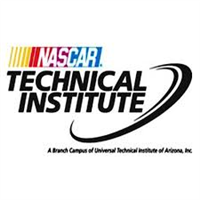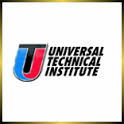What do they do?
Diagnose, adjust, repair, or overhaul automotive vehicles.
Also known as:
Automobile Mechanic (Auto Mechanic), Automobile Technician (Auto Tech), Automotive Drivability Technician (Auto Drivability Tech), Automotive Mechanic (Auto Mechanic), Automotive Service Technician (Auto Service Tech), Automotive Technician (Auto Tech), Diagnostic Technician (Diagnostic Tech), Heavy Line Technician (Heavy Line Tech), Lube Tech (Lubrication Technician), Mechanic, Quick Service Technician (Quick Service Tech), Service Technician (Service Tech), Transmission Rebuilder
-
0.7%
Change
Ranks #54 in job growth rate2,410Job Openings
Ranks #11 in net job growth
Looking for colleges that offer a specific major? Use the College Match Tool to find your best-matched schools and discover your estimated Net Price!
- High school diploma equivalent (44%)
- Some college, no degree (22%)
- Less than high school diploma (16%)
- Associate's degree (13%)
- Bachelor's degree (4%)
- Master's degree (<1%)
- Doctorate or Professional Degree (<1%)
People in this career often have these skills:
- Repairing - Repairing machines or systems using the needed tools.
- Troubleshooting - Determining causes of operating errors and deciding what to do about it.
- Critical Thinking - Using logic and reasoning to identify the strengths and weaknesses of alternative solutions, conclusions, or approaches to problems.
- Operations Monitoring - Watching gauges, dials, or other indicators to make sure a machine is working properly.
- Equipment Maintenance - Performing routine maintenance on equipment and determining when and what kind of maintenance is needed.
People in this career often have talent in:
- Deductive Reasoning - The ability to apply general rules to specific problems to produce answers that make sense.
- Manual Dexterity - The ability to quickly move your hand, your hand together with your arm, or your two hands to grasp, manipulate, or assemble objects.
- Problem Sensitivity - The ability to tell when something is wrong or is likely to go wrong. It does not involve solving the problem, only recognizing that there is a problem.
- Inductive Reasoning - The ability to combine pieces of information to form general rules or conclusions (includes finding a relationship among seemingly unrelated events).
- Finger Dexterity - The ability to make precisely coordinated movements of the fingers of one or both hands to grasp, manipulate, or assemble very small objects.
- Near Vision - The ability to see details at close range (within a few feet of the observer).
- Arm-Hand Steadiness - The ability to keep your hand and arm steady while moving your arm or while holding your arm and hand in one position.
- Control Precision - The ability to quickly and repeatedly adjust the controls of a machine or a vehicle to exact positions.
- Oral Comprehension - The ability to listen to and understand information and ideas presented through spoken words and sentences.
- Information Ordering - The ability to arrange things or actions in a certain order or pattern according to a specific rule or set of rules (e.g., patterns of numbers, letters, words, pictures, mathematical operations).
- Visualization - The ability to imagine how something will look after it is moved around or when its parts are moved or rearranged.
- Extent Flexibility - The ability to bend, stretch, twist, or reach with your body, arms, and/or legs.
People in this career often do these activities:
- Inspect vehicles to determine overall condition.
- Record information about parts, materials or repair procedures.
- Operate transportation equipment to demonstrate function or malfunction.
- Test mechanical systems to ensure proper functioning.
- Adjust equipment to ensure optimal performance.
- Adjust vehicle components according to specifications.
- Replace worn, damaged, or defective mechanical parts.
- Repair non-engine automotive or vehicle components.
- Read work orders or descriptions of problems to determine repairs or modifications needed.
- Confer with coworkers to coordinate work activities.
- Inspect gas systems or components to identify leaks or other potential hazards.
- Estimate costs for labor or materials.
- Confer with customers or users to assess problems.
- Align equipment or machinery.
- Reassemble equipment after repair.
- Disassemble equipment for maintenance or repair.
- Service vehicles to maintain functionality.
- Plan work procedures.
- Inspect mechanical components of vehicles to identify problems.
- Clean work areas.
- Service green vehicles to make repairs or maintain good working order.
- Service heating, ventilation or air-conditioning (HVAC) systems or components.
- Repair worn, damaged, or defective mechanical parts.
- Disassemble equipment to inspect for deficiencies.
- Test electrical circuits or components for proper functioning.
- Rebuild parts or components.
- Rewire electrical or electronic systems.
- Troubleshoot equipment or systems operation problems.
- Repair defective engines or engine components.
- Install vehicle parts or accessories.
This page includes data from:

 Occupation statistics: USDOL U.S. Bureau of Labor Statistics Occupational Employment Statistics
Occupation statistics: USDOL U.S. Bureau of Labor Statistics Occupational Employment Statistics
 Videos: CareerOneStop, USDOL/ETA and the Minnesota Department of Employment & Economic Development
Videos: CareerOneStop, USDOL/ETA and the Minnesota Department of Employment & Economic Development












